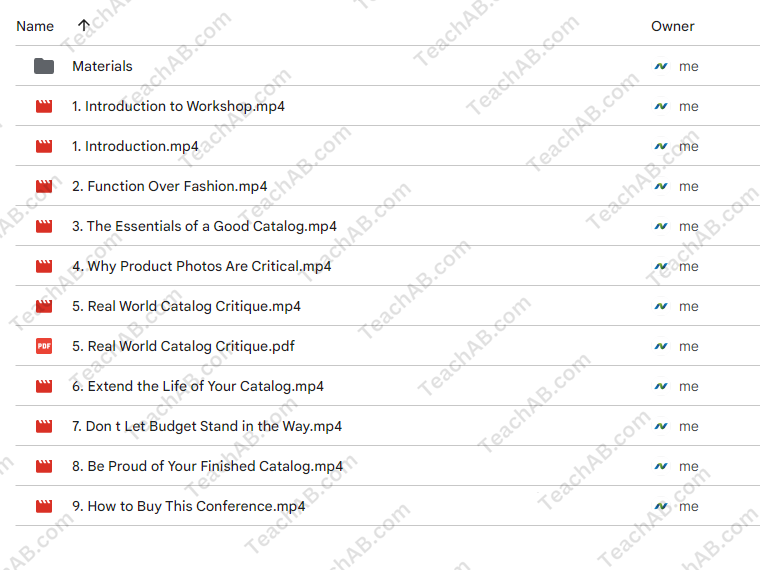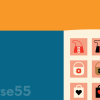Create an Effective Wholesale Catalog By Katie Hunt
$14.00 Original price was: $14.00.$5.00Current price is: $5.00.
Creating an Effective Wholesale Catalog
Content Proof:
In the competitive world of wholesale business, an effective wholesale catalog isn’t just a collection of products; it’s a bridge connecting suppliers to retailers. As Katie Hunt emphasizes, crafting a well-structured catalog is crucial for any business aspiring to thrive in the marketplace. It serves as a vital sales tool that showcases products and communicates essential information, all while encapsulating the brand’s ethos. To navigate this intricate process, it’s important to understand the key components that can elevate a catalog from an ordinary document to an extraordinary sales instrument. This article delves into the insights from Hunt, exploring essential components such as contact information, thorough product descriptions, high-quality photography, catalog longevity, and the focus on functionality.
The Importance of Contact Information
One of the foundational elements of an effective wholesale catalog is the inclusion of contact information. This seemingly simple detail can have a profound impact on a buyer’s ability to reach out with questions or inquiries. Including your phone number, email, and website on every page, ideally in the footer, not only ensures they are easy to find but also builds a sense of trust and accessibility between the seller and potential buyers.
Consider this: if a retailer is flipping through your catalog and sees your contact information readily available, they are more likely to reach out, ask for specifics, or place an order. In a world where convenience reigns supreme, your catalog should serve as a welcoming invitation for communication, not a cold, impersonal document.
Key Contact Components to Include:
- Phone Number: A direct line for quick inquiries.
- Email: An efficient way for buyers to request more information.
- Website: A portal for additional details or an online order.
By making this information prominent, businesses can effectively lay the groundwork for stronger connections with retailers, paving the way for increased sales and positive ongoing relationships.
Crafting Thorough Product Descriptions
A catalog filled with vibrant images and contact information means little without compelling product descriptions. Katie Hunt stresses the need for thorough product details that go beyond the basics. Each description should weave a narrative around the product, embedding a backstory that captures the essence of what makes it special.
Think of product descriptions as an opportunity to tell a story one that resonates with potential buyers. Retailers are not only looking for products; they seek items that align with their brand identity and appeal to their customer base. Your catalog must convey practical information such as materials, sizing, pricing, and minimum order quantities in a clear, easily digestible format.
Elements of a Strong Product Description:
- Narrative: Provide context that adds depth and narrative to the product.
- Specifications: Clearly list materials, dimensions, and other essential technical details.
- Pricing: Transparency regarding costs helps retailers plan their ordering.
- Minimum Order Quantities: Clarify these early to avoid confusion later.
By providing comprehensive descriptions, businesses enhance the retailer’s ability to make informed purchasing decisions, fostering trust and paving the way for future collaborations.
The Role of High-Quality Photography
In the realm of wholesale catalogs, high-quality photography serves as the visual language that speaks volumes. As the age-old saying goes, “A picture is worth a thousand words,” and nowhere is this truer than in the world of product marketing. Katie Hunt advocates for professional-grade photography, though she acknowledges that not all businesses can afford this.
If hiring a professional isn’t feasible, DIY photos should still be crisp, well-composed, and reflective of the product’s true colors and textures. Additionally, including styled images showing products in real retail environments can significantly enhance a buyer’s imagination and interest.
Types of Images to Include:
- Product Focused: Clear shots of the product itself.
- Styled Shots: Images showcasing products in use or in a retail setting.
- Detail Shots: Close-ups that highlight unique features or craftsmanship.
Investing in quality photography creates a visual appeal, captivating buyers and making them feel more confident about their purchasing decisions. It transforms a simple catalog into an exhilarating showcase of potential that no retailer can overlook.
Ensuring Catalog Longevity
Creating a print catalog can be a significant investment, and it’s wise to consider its longevity. Hunt advises that minimizing reprints can save costs and resources. For this reason, businesses can date catalogs to cover multiple years (for example, 2024-2025), allowing updates through inserts for new products without needing a complete redesign.
Furthermore, it is crucial to maintain current digital versions of the catalog. A well-maintained digital catalog ensures that retailers can access the most up-to-date offerings and pricing without confusion or inconsistency.
Strategies for Increasing Catalog Longevity:
- Use Year-Ranges: Cover successive years to reduce reprint needs.
- Include Inserts: Make space for additional products as they are developed.
- Keep Digital Versions Current: Frequently update your online catalog to reflect new changes.
A long-lasting catalog not only represents brand sophistication but also shows a commitment to efficiency, making life easier for both the sellers and retailers.
Focus on Functionality Over Aesthetics
While aesthetics are important, Katie Hunt stresses that the primary goal of a wholesale catalog is its functionality. Retailers rely on catalogs not just to view your products but to understand important terms and conditions that govern orders.
Incorporating essential information such as order minimums, turnaround times, payment methods, and shipping policies should be a priority. Though it may not be the most glamorous aspect of catalog design, placing this information clearly ideally at the back of the catalog for easy reference can be immensely beneficial for buyers.
Critical Functional Elements to Include:
- Order Minimums: Clearly define the least quantity that can be ordered.
- Turnaround Times: Provide estimated time frames for production and delivery.
- Payment Methods: Specify accepted payment options to facilitate smoother transactions.
- Shipping Policies: Outline shipping methods, costs, and expected delivery times.
Focusing on these functional aspects ensures retailers can navigate your catalog effectively while making informed decisions, which ultimately drives sales and enhances collaboration.
Conclusion
Creating an effective wholesale catalog is an art form that requires meticulous attention to detail. By incorporating Katie Hunt’s insights regarding contact information, product descriptions, photography, longevity, and functionality, businesses can craft a catalog that is not just a passive showcase of products but a dynamic sales tool. Each element plays a pivotal role in enhancing the overall presentation and utility of the catalog, ultimately driving sales and fostering stronger relationships with retailers.
In a marketplace replete with options, a thoughtfully designed catalog can differentiate a brand, attracting buyers and forging long-lasting partnerships. With the right approach, the importance of a well-crafted catalog cannot be overstated, echoing the principle that every detail counts when it comes to making an unforgettable impression.
Frequently Asked Questions:
Business Model Innovation: We use a group buying strategy that enables participants to share costs and access popular courses at lower prices. This approach helps individuals with limited financial resources, although it may raise concerns among content creators regarding distribution methods.
Legal Considerations: Our operations navigate complex legal issues. While we do not have explicit permission from course creators to resell their content, there are no specific resale restrictions mentioned at the time of purchase. This lack of clarity allows us to offer affordable educational resources.
Quality Control: We guarantee that all course materials provided are identical to those offered directly by the creators. However, please note that we are not official providers. As a result, our services do not include:
– Live coaching calls or sessions with the course author
– Access to exclusive author-controlled groups or portals
– Membership in private forums
– Direct email support from the author or their team
Our goal is to make education more accessible by offering these courses independently, without the additional premium services available through official channels. We appreciate your understanding of our unique approach.
Be the first to review “Create an Effective Wholesale Catalog By Katie Hunt” Cancel reply
You must be logged in to post a review.
Related products
Business
Business
Business
Business



















Reviews
There are no reviews yet.